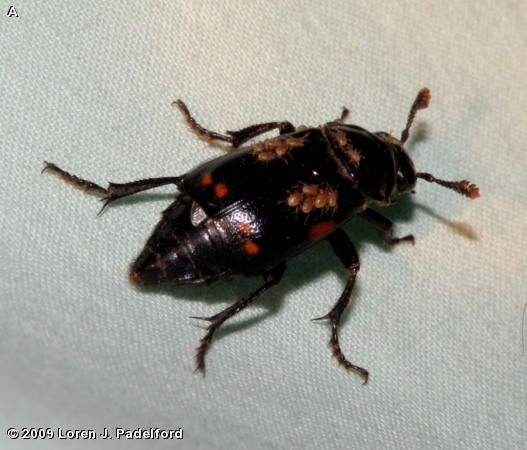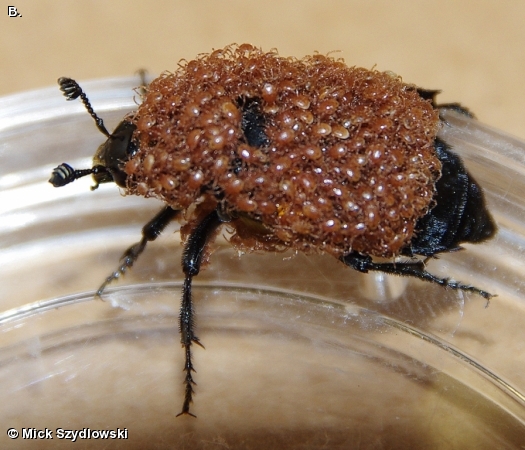
This is a black beetle about 1 inch long. In this beetle each elytra has an orange spot along the outer margin, closer to the elytral base than to the apex. Also present are two spots near the base of each elytron. The tan spots are phoretic mites. The second antennal segment is very small.
This beetle was photographed at night in early July. Its occurrence at the nature center is not known. It is primarily a species of the eastern U.S. extending to the Midwest.
The 19 species of Nicrophorus are known as sexton or burying beetles. These beetles bury the bodies of small vertebrates removing fur or feathers and making the corpse into a type of meatball. The larvae are initially fed bits of this by one or both parents. Adults make a squeaking sound by rubbing the abdomen against the wing covers. The phoretic mites cling to the beetles for transportation and reproduce in the beetle’s brood chamber. it is a very interesting relationship. This link describes this relationship.
Disclaimer: The content of NatureSearch is provided by dedicated volunteer Naturalists of Fontenelle Forest who strive to provide the most accurate information available. Contributors of the images retain their copyrights. The point of contact for this page is: Eric Scholar.

